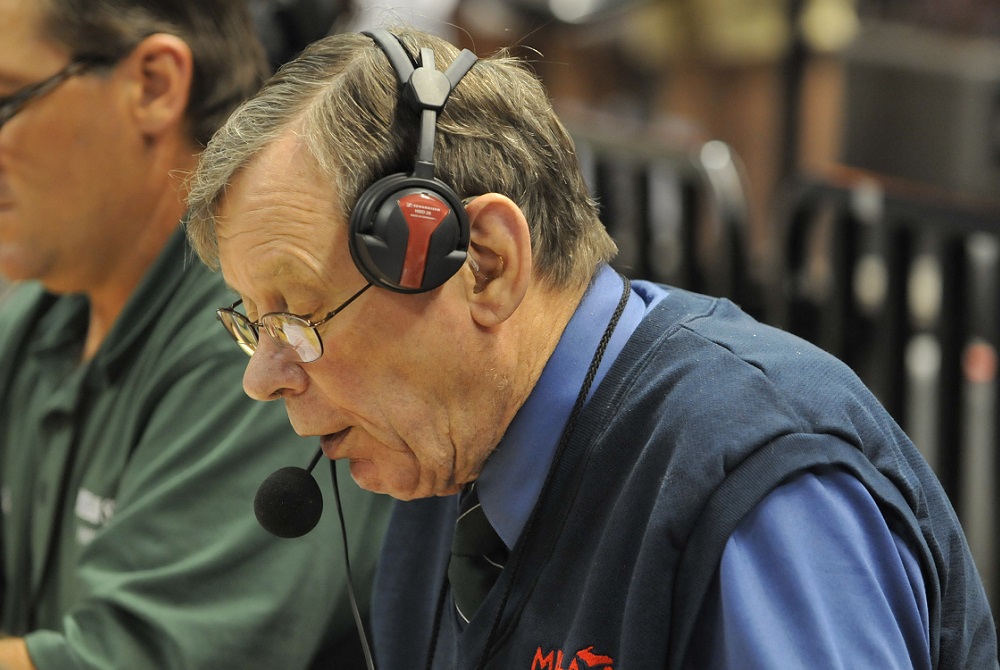
Heads and Heat
August 16, 2012
We are engaged in very serious discussions. They’re not only complicated, with unintended negative consequences possible from what are thought to be positive actions; they’re also a matter of life and death.
The topic is football – the high school sport under most scrutiny today and suffering from the most criticism it’s seen since the 1970s when catastrophic neck injuries spiked, liability awards soared, many insurers balked, and most helmet manufacturers abandoned the business altogether.
During recent years we have learned about the devastating long-term effects of repeated blows to the head; and we’re trying to reduce such hits. We’ve learned that 70 percent of concussions in football result from helmet-to-helmet contact, and we’re trying to have coaches teach blocking and tackling differently and have officials penalize “high hits” consistently and rigorously.
During the past several years we’ve learned that serious heat illness and heat-related deaths are 100 percent preventable, yet nationwide there were 35 heat-related deaths in high school football alone from 1995 to 2010; and we’re promoting practices that acclimatize athletes more gradually than “old school” traditionalists might advocate.
As we simultaneously address issues of heads and heat in football, some coaches may think we’re being overbearing, while many in medical fields say we’re out of date, citing higher standards of the American Academy of Pediatrics, National Athletic Trainers Association and National Federation of State High School Associations, as well as many of our counterpart organizations across the country.
As we consider in-season changes to improve athlete acclimatization and reduce blows to the head, we should be open to making out-of-season changes that work toward rather than in opposition to those objectives. There can be no sacred cows. The topic is too serious.
Ultimately, if we err in the outcome of this year’s discussions about heads and heat in football, it must be on the side of safety, on minimizing risks for student participants. They deserve it and, once again, the sport of football needs it.

In Memoriam: Erik O. Furseth (1930-2022)
By
Geoff Kimmerly
MHSAA.com senior editor
March 1, 2022
For 50 years, Erik O. Furseth’s voice chimed throughout MHSAA and Michigan State University athletic events. That voice surely will continue to live in the memories of the many who cherished listening to him, as he died Monday evening at the age of 91.
Furseth began as the public-address voice of MHSAA Boys Basketball Finals in 1968 and continued well into his 80s as those games moved from Jenison Field House to other locations across the Lower Peninsula and eventually settled into Breslin Center. He also was the longtime MHSAA football championship game voice going back to their days at the Pontiac Silverdome and provided the narration for MHSAA Baseball Finals for a decade. He announced his last MHSAA event in 2018.
An MSU basketball player during the early 1950s, the Cleveland Heights, Ohio, native played in the Spartans’ first Big Ten game in 1951. A forestry student initially, Furseth switched to communications. He later became a legendary rock-n-roll radio DJ in Lansing, and for a decade hosted Saturday night dances at the Lansing Civic Center that drew 1,000 teenagers a night – and a surprise performance by a young Stevie Wonder.
Furseth’s voice continued to be known particularly by Spartan fans as the homecourt voice for MSU basketball from 1968-2002 and MSU football from 1971-98. For more, see this feature from the MHSAA Basketball Finals programs written in 2013.
Furseth moved from East Lansing to Traverse City about 25 years ago. Click for his obituary and funeral arrangements.
Longtime MHSAA Public Address announcer Erik O. Forseth died Monday evening at the age of 91. Nearly every MHSAA Boys Basketball Final for 50 years started the same way – with Erik introducing both teams. Our thoughts are with his family and friends. pic.twitter.com/CA5iRKt39t
— MHSAA (@MHSAA) March 1, 2022

